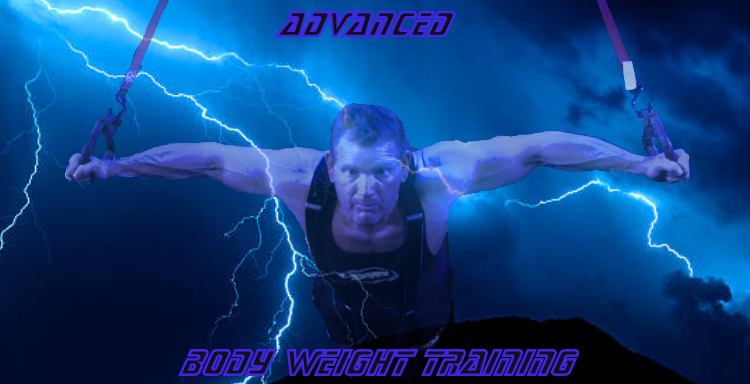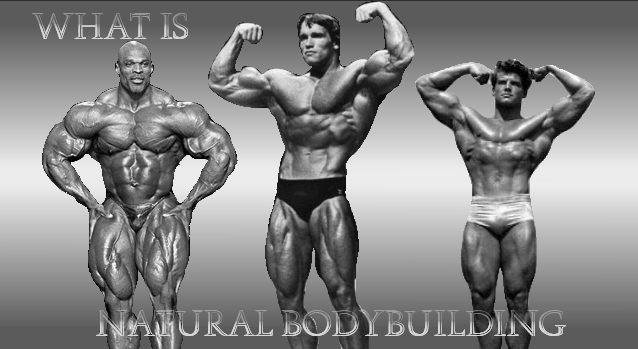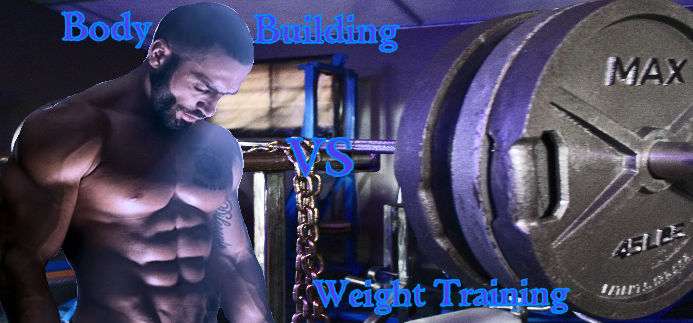Weight Training And Weight Loss

Welcome to weight training and weight loss, if you’re new to weight lifting, don’t let it intimidate you! This isn’t about what you are today, this is about what you’re about to become! Don’t let fear creep into the cracks of your armour.
Follow your weight training and fitness dream and don’t let old ideas, people’s opinions or obstacles get in your way. Make up your mind, dare to be different…. and never give up on your dream.
Losing Weight to Keep It Off
Whether you’re new to weight training, a competitive bodybuilder, or vigorous fitness enthusiast; there are many different ways a person can reduce weight or body fat by adjusting the dial on the eating habits!
A positive mental attitude towards eating and training behaviour is
all about helping you put food in a new perspective, altering eating
habits to give you that body you want.
Weight training and weight loss involves solid strategies with five detailed helpful tips that will give you the tools to change the way you eat, whether you’ve been eating too much, or simply the wrong foods or both.
As creatures of habit, we developed habits for many tasks: driving, working, exercising, and of course eating. Often our eating habits center on the way we shop for, cook and eat our food.
Here in the weight training and weight loss article, the main goal is not only to shed pounds and gain some muscle, but...
also shed new light on good and bad eating habits and bring awareness to these habits and incorporate weight training as an exercise form to increase strength and muscle size, which in-turn increases the speed of your metabolic rate and the break down of macronutrients.
So let's break down five important steps of eating to help guide you towards building a better body.
Note: to be fair to all of my female viewers; it is difficult to combine healthy eating with weight training all in one detailed article. I want to share solid advise that really works for you, this article will focus a little deeper on physical and physiological eating habits and triggers.
Weight training and weight loss are both parts of each other often speeding weight loss results faster than other conventional methods. So with you in mind I have compiled an extensive list of the best training and fat loss exercises to speed metabolism and weight loss results safely.
Step one: Awareness
- The first step in changing eating habits is to become aware of them; you can’t get to your goal if you don’t know where you’re starting from. Start a small diary and keep it for seven days, record everything you eat, and most importantly; don’t cheat. This will pay back huge dividends over the next weeks and months.
- This often shows things you weren’t actually aware of: whether you nibble away an entire meal while you’re preparing it? Or do you consciously eat while you’re watching TV? Do you eat too much at restaurants because you’re paying for it? Once you've completed, tracked and monitored this, you can move to step two.

Step two: why do you eat?
let's look at your eating “triggers”? - These are things that immediately proceed you’re eating.
- Do you eat whenever you are offered something?
- Are most of your triggers emotional ones?
- Do you use eating to quiet psychological pain?
- Or does eating help with stress, such as: fear, anxiety, boredom, loneliness or depression?
Don’t worry if you do, this is common. But only by recognizing these external cues and being able to differentiate between real or physiological hunger will you begin to make a change in the way you eat and view weight training and weight loss as a lifestyle.
We are reminded and constantly bombarded by eating cues that surround us daily.
Often found in TV commercials, the smell of a bakery or restaurant foods, including the site of others eating, etc.; but, there is only one true signal: this is the trigger given as your body honestly tells you, the stomach is empty and it’s time to eat
learning to understand the difference between external cues and real hunger builds new awareness. One big distinction is: psychological hunger is not satisfied with food! A successful diet will respond only to the feeling of a true physical need for energy.
Step three: goals/victories
Now that you understand and have a better handle on eating
situations and triggers, it’s time to think about setting goals. Your long-term
goal could be outlined and centered on fat-loss or muscle increase, make your training appropriate to your goal.
First:
- Take your time and make a specific and very important decision on what you want to set as a long-term goal.
- The long-term goal could be; achieving a desired weight.
- Fitting a new dress, pant or shirt size; could be a goal.
- Add weight training and new diet strategies to produce faster results.
- Perhaps a time-based goal would be more suitable, If you have a longer time frame to achieve it in.
Second:
- Break your long-term goal down into smaller short-term goals, each with an approximate date of accomplishment.
- Psychologically, this will give you something to aim for making this process easier to keep in sight.
- When you reach your short-term goal, reward yourself e.g., perhaps a meal of your choice, a movie night, a new t-shirt, sports-bra, or some chocolate, etc., to encourage and prove that life is not over.
- This symbolizes accomplishment of something – this is
a small victory and you should feel good about yourself, take each short-term
goal one at time. Remember it’s a lot easier to climb a ladder a step at a
time, than it is to try and leap to the top.
- When setting goals, keep them reasonable and realistic. If you are a woman don’t expect to drop 30 or 40 pounds in a month. Likewise for a man, you can’t expect to be shredded like a competitive bodybuilder in 8 or 10 weeks if you’re a beginner. Give yourself and these goals time, and you will reach them.
Step four: setting up support?

- If you want help, support and positive reinforcement when you start your weight training and weight loss program, don’t be shy or nervous to ask for it; tell your friends, family or spouse what you need and how they can help. Let friends and coworkers know what you’re up to, chances are they’ll be very helpful.
- As you begin your weight training and weight loss program, life changes-somewhat you may need some support such as: (confiding in a friend or family member that supports your cause). Don’t let the fear of failure get in the way of the changes you want to make commonly ensures success.
- Note: just be aware that there may be some people in life that are not as eager for your success as you are. Choose the people you know and trust for support with your weight training and weight loss ideas.
- Also make sure if you haven’t; to have the support of your Dr. or health care provider to consult with and make sure their thoughts on your new lifestyle are realistic for you.

Step five: prepare
Since you’re now ready and revved-up to get going on your weight training and weight loss goal, you’re going to need some ammunition...
- First: having some healthy low-calorie snacks handy when those nagging urges of hunger to eat, hit you. (This may mean bringing a lunch kit or cooler to work or keeping these snacks in your briefcase or purse, etc.
- Second: keep in mind that your new training and diet goal is a long-term “decision”, utilizing moderation, better shopping, dietary decisions and food preparation, are all a big part of this goal being successful.
- Third: as we are all human it's inevitable, even the most dedicated athletes have the occasional slip, this is not the end of the world, and don't let it be. Have some fun and an occasional binge day once in a while, don't let it last all day, pick a morning or afternoon for this day, then get back on track.
- Fourth: There will be days you feel strong and others where you feel weak, even the disciplined look at their diets and lifestyles in varying shades of Gray; of times when they where focused and other times were they were relaxed. In other words: enjoy life, and your body will reward you for your hard work.
Reverse Eating Patterns!
Missing the most important thing every morning:
From the time your body begins to wake up in the morning. The metabolism begins to increase as it’s getting ready to start the day’s activities. Blood begins to pump harder the brain and central nervous system, organs and bowels also begin to wake and become active.
Eating a solid nutritional breakfast is Paramount to weight training and weight loss. If you're heading to work or school in the morning with no gas in the tank, you're probably not going very far!
Once you’re awake food should be consistently eaten and consumed in the right quantities throughout the day and slowly reduced as the days activities and workout ends.
The amount of food consumed should now become less...
Most are the exact opposite, skipping meals and typically over eating as the evening wears on. The reason that this yields such poor results with weight loss, (unless you have a naturally fast metabolism) is: it's the reverse of how we should think.
The more food you consume after dinner will not be metabolized/burned as quickly or efficiently in the evening, as opposed to eating the proper quantities throughout the day when the body’s activity and energy usage is at its highest.
Experiment – to increase your metabolism speed, adjust meal sizes and food groups to see what digests fastest for you. This is not something a scientist or Dr. can tell you. Essentially; You need to learn, to earn your new body by becoming best friends with it!
Experiment Be Instinctive Learn to Listen To Your body

Being Instinctive means: experimenting with repetitions and
exercises to find the ones that stimulate the most.
Also the amount of food that you snack on and eat regularly should be monitored, listen and be aware of your snacking habits...
If it’s telling you that you’re hungry every 2 ½ to 3 hours, then you’re eating the right foods in the right portions if it’s not, cut back just a little more or try changing up these foods, don’t do anything drastic, as your experimenting and learning.
This is how weight lifters and bodybuilders that train vigorously, monitor their dietary strategies by simply; paying attention to the bodies digesting and metabolizing efforts.
Be instinctive by understanding that your body is the one in charge, learn to become the director of it, just do things slowly to avoid putting it into state of shock.
Save the shock for your weight training in the gym. The body has its limits, and it’s stress points - it just needs an adjustment time, it always takes a little time for the body to regulate to any new lifestyle; it all comes down to changing poor habits for healthier ones.
Learn to Regulate Weight Training and Weight Loss
Your ‘Fat set point’ and fat thermostat:

Everyone has a weight regulating system in his or her brain. The job of this system is to maintain the fat content of the body at a certain level. This is called the “fat set point”.
This is a homeostatic organism, in that it’s designed to reach that state of equilibrium in most of its functions to work and maintain that equilibrium.
Once the body becomes accustomed to maintaining a certain level of fat retention, it will try to maintain and continue with this level.
As a result, when you diet or resort to cutting calories drastically in an attempt to lose weight, the body will naturally resist these efforts.
Genetically were naturally encoded at infancy to be fatter or slimmer than normal.
‘Normal’ simply means: the ideal healthy weight set by the Canadian and North American medical industry's, these may vary from country to country, as to what an average adult male or female should weigh to be healthy, given age, gender and height etc.
This function of various metabolic pathways in the levels of various enzymes and hormones can assist the body in storing a high percentage of calories consumed in the form of body fat.
As seen in a slender person, food tends to be converted directly into energy, faster and in greater amounts. Surprisingly, this set point is also affected by environment, behavior, excessive stress and can often be genetically hereditary.
Your genetics determine certain limits of what level of lean or body-fat-mass you’ll be able to maintain under normal circumstances.
However:
This range is often quite wide, within these ‘set point limits’ you can change your 'set point ’ considerably by changing your nutritional and exercise outlook.
As with all things in life, the ones worth having are often the ones we have to work hardest at. But, commonly give the greatest rewards.
The Tricks The Body Plays on us and We Don’t Even Know It?

Once you’ve reached adulthood, this ‘homeostatic organism’ controlling our body's; will often try to trick you into maintaining your ‘fat set point’. How does it do this?
- The body is capable and will vary its perception of whether you want to eat or not. (Be aware of this and only answer to eating when the stomach tells you to).
- Be aware of the kinds of foods you crave. (sweets, pastry or fried foods are often addiction choices: if this is what your craving, this maybe physiological or emotional hunger and not real hunger).
- The body can also manipulate functions like telling you to eat when it simply needs to be hydrated. (When watching your weight always try hydration first).
- The body has a natural defense mechanism protecting against famine and stress and it's real. (To coexist - this natural defense system of the body needs changes in diet made slowly and safely when adjustments are made to this mechanism).
- For some of us, simply cutting calories from carbs, or trying to speed-up the weight loss process can begin to actually burn less and store even more body fat. (Drastic changes or altering food intake from normal daily eating, may alter weight loss results: taking your time = safe and lasting results).
This can be frustrating and confusing for many and the reason so many fail at their weight loss and dietary goals, avoid mixing safety and speed where weight loss is concerned.
The body is an organism and does have a will of its own; learning how to manipulate and regulate it safely using weight training to achieve weight loss, gives you the home advantage in setting any goal and achieving it.
Concluding:
In summary, listen to your body with your goal in mind and it will reward you, lift weight to lose weight, away's lifts dull spirits - as energy, metabolism and strength increases so will confidence and life's-outlook!
I realize there's a lot of information in the weight training and weight loss article, I encourage you not to give up; keep reading to educate.
Take your education on weight training and nutrition in stages, if you’re anything like me and you try to cram too much in; it becomes information overload and doesn’t get used.
Take your time reading the information here, always feel free to come back and re-read if necessary. The content here is only a guide and nothing more. It 'works' if you apply it. Experiment, change or alter what you feel you need to in stages, be creative and have some fun along the way in your new lifestyle, and live your Dream.
Good Luck
DWT






